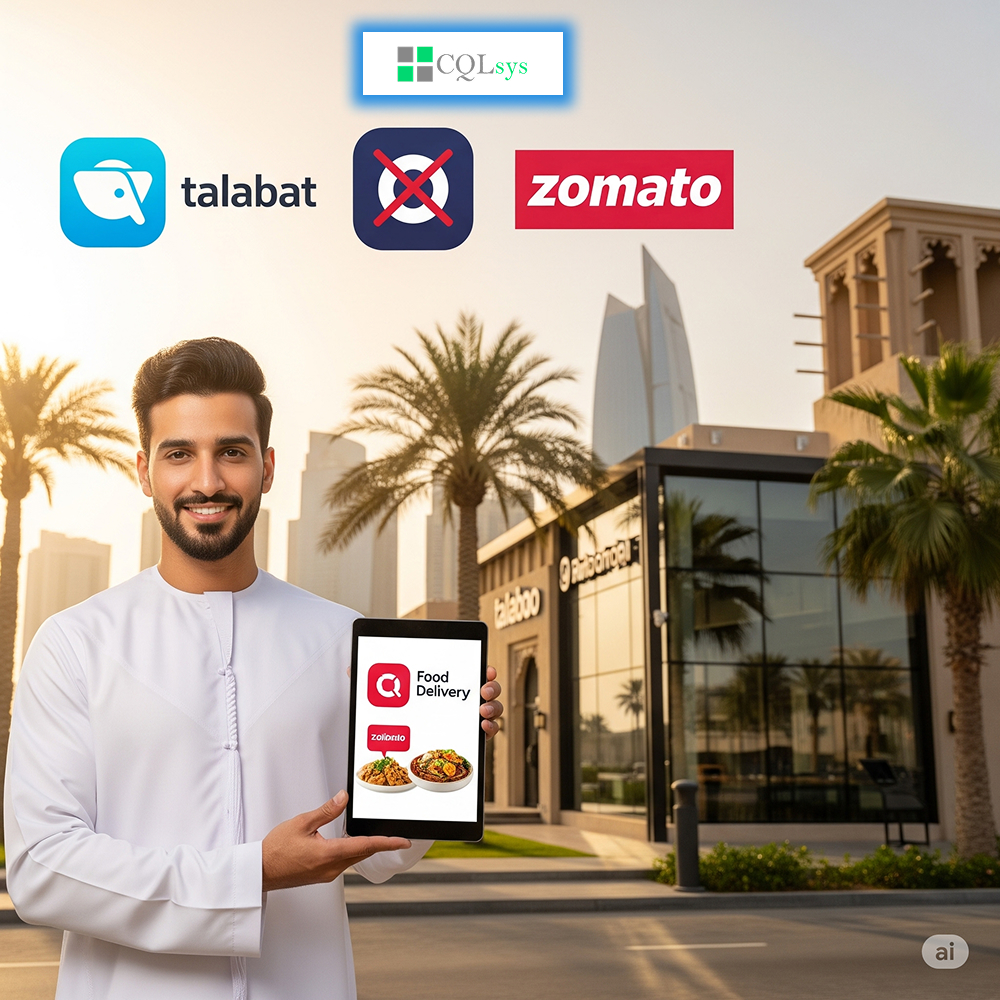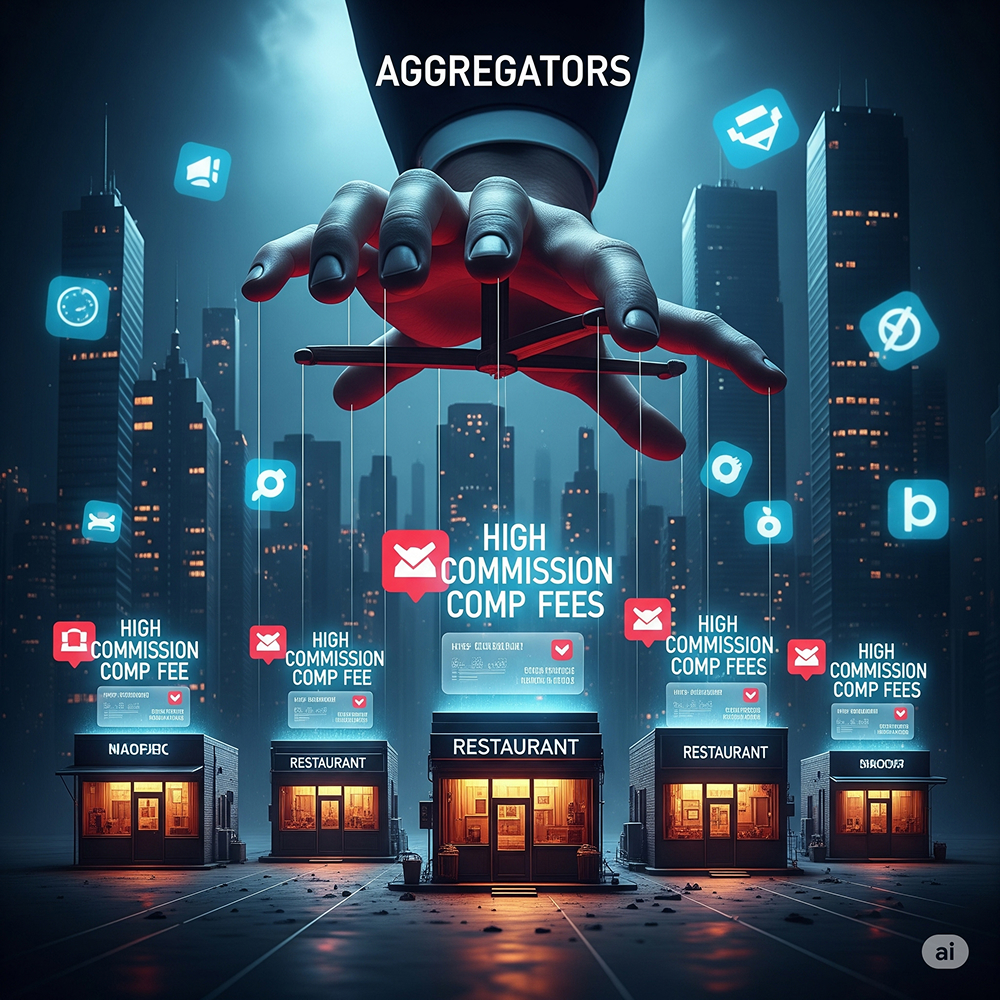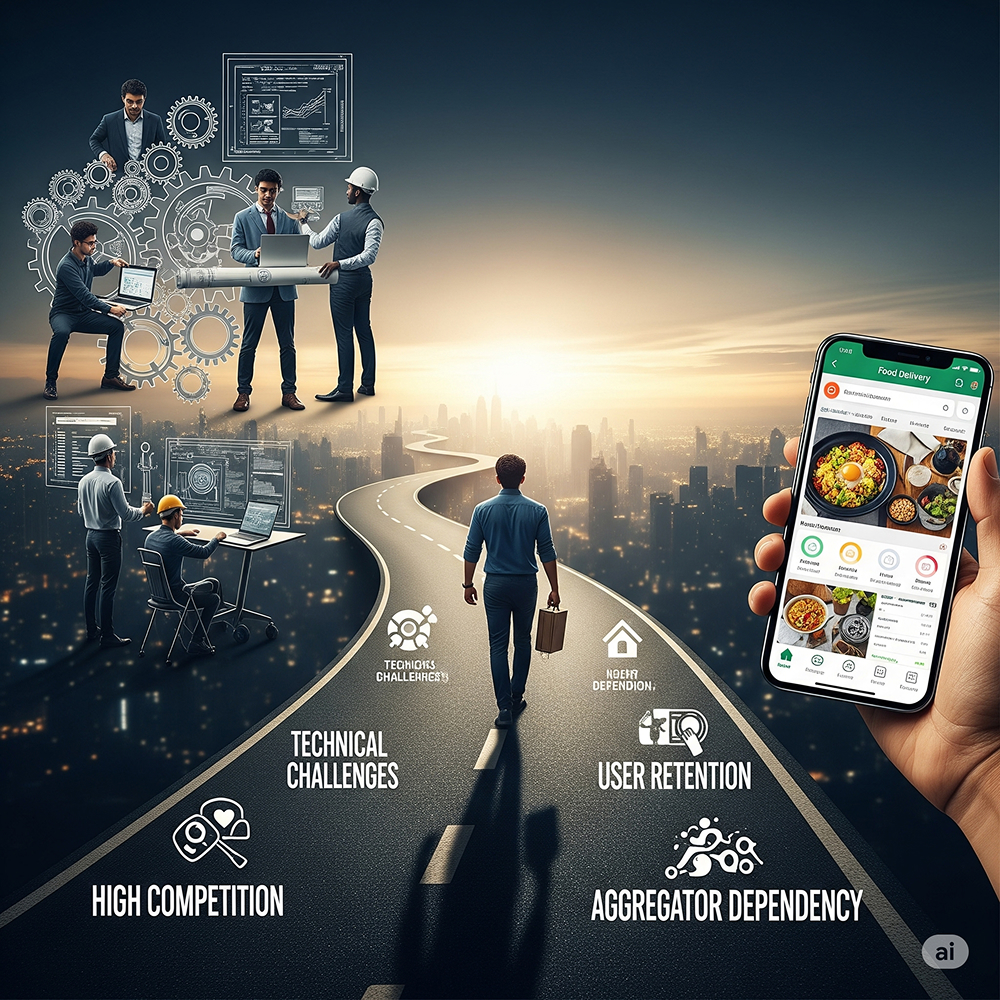The Rise of the "Restaurant-Owned App": Fighting Back Against Aggregator Dominance in the UAE

The UAE's dynamic culinary landscape, known for its global flavors and innovation, has been significantly shaped by the rise of third-party food delivery platforms like Talabat, Deliveroo, Careem Food, and Noon Food. While these platforms have expanded restaurant reach and simplified delivery logistics, they’ve also introduced challenges—high commission \ fees, limited customer interaction, and diluted brand presence. Many restaurants are now feeling the pressure of maintaining profitability and standing out in an increasingly crowded digital space.
A major shift is happening as restaurants across the Emirates, from local favorites to global chains, invest in their own apps. This strategic move goes beyond technology—it's essential for regaining control and driving growth in a competitive market.. The trend towards on demand food delivery app development is gaining unprecedented momentum, leading many to seek out a reliable food delivery app development company .
The Stranglehold of Aggregator Dominance: A Detailed Analysis

The UAE's high smartphone penetration and tech-savvy populace have made it a prime market for food delivery apps. Aggregators have revolutionized consumer habits, offering undeniable benefits:
- Vast Market Reach:They connect restaurants to millions of potential customers, extending their visibility far beyond physical locations.
- Marketing Prowess: Leveraging enormous marketing budgets, aggregators drive user acquisition and retention through extensive advertising and promotions.
- Unparalleled Customer Convenience: Their user-friendly interfaces, diverse payment options, and real-time tracking have set a new industry standard for consumer expectations in food delivery application development.
Yet, this dominance comes at a substantial, often crippling, cost to restaurants:
-
Exorbitant Commission Fees:The Unrelenting Profit Drain This is the most critical and contentious issue. Aggregators in the UAE typically charge commission fees ranging from 15% to an astonishing 35% per order. Consider an AED 100 order: a 30% commission immediately deducts AED 30 from the restaurant's revenue. For businesses already operating on razor-thin margins, this significantly erodes profitability.
- The Discount Trap:Aggregator discounts (e.g., 40% off) may boost orders but drastically cut restaurant profits. For a AED 100 meal discounted to AED 60, with a 35% commission on the original price, the restaurant earns only AED 25—often not enough to cover costs.
- Hidden or Ancillary Fees:Beyond standard commissions, some platforms charge additional fees—such as per-menu-view or premium listing fees—raising costs and making reliance on aggregators less attractive for restaurants.
-
The Data Black Hole: Losing Invaluable Customer Insights: Aggregators act as an impenetrable barrier, shielding restaurants from direct customer interaction and crucial data. Restaurants receive minimal customer information – typically just the order details and delivery address. This fundamental lack of data has profound negative implications:
- No Personalized Marketing:Restaurants are unable to track customer preferences, order history, or frequency, hindering their ability to send targeted promotions, birthday offers, or re-engagement campaigns. They operate blindly.
- Impaired Loyalty Building:Cultivating true customer loyalty is challenging when the "relationship" is primarily with the aggregator's platform, not the restaurant's brand. Customers often attribute their experience to the app, not the establishment itself.
- Missed Upselling Opportunities:Without historical data, restaurant staff cannot intelligently suggest complementary items or anticipate future needs, directly impacting average order value.
-
Brand Dilution and Commoditization: On aggregator platforms, a restaurant is often reduced to a generic listing on a long, standardized scroll – a commodity among hundreds.
- Loss of Unique Identity:A restaurant's carefully cultivated ambiance, unique culinary philosophy, or distinctive brand story struggles to shine through a uniform app interface.
- Competition on Price, Not Value:The focus shifts from the dining experience and food quality to discounts, delivery speed, and overall convenience, often forcing restaurants into a detrimental race to the bottom on pricing.
-
Limited Control Over the Customer Experience: Once an order leaves the kitchen, much of the control is ceded to the aggregator.
- Delivery Quality:Issues such as late deliveries, unprofessional riders, or mishandled food directly reflect on the restaurant's reputation, even if the problem originated with the third-party logistics.
- Customer Service Detachment:Any post-delivery issues are typically routed through the aggregator's customer service, further distancing the restaurant from its patrons and potentially misrepresenting its policies or brand ethos.
-
Operational Inefficiencies and "Tablet Hell": While aggregators offer a digital sales channel, they often introduce new layers of operational complexity.
- Many restaurants find themselves juggling multiple tablets, one for each aggregator platform, leading to cluttered counters, manual order entry, and a higher risk of errors in a fast-paced environment.
- Sales data becomes fragmented across various platforms, making it challenging to gain a holistic view of performance, analyze trends, or manage inventory efficiently. This creates a data silo problem.
The Dawn of the Restaurant-Owned App: Reclaiming the Narrative

In response to these mounting pressures, an increasing number of proactive restaurants in the UAE are investing in their own proprietary mobile applications. This strategic move isn't about entirely abandoning aggregators but rather about creating a more balanced, sustainable, and ultimately more profitable business model. It represents a pivot towards smarter app development for food business growth.
The Compelling Advantages of Custom Food Delivery Software Solutions
- Dramatically Increased Profit Margins:This is the most immediate and impactful benefit. By eliminating hefty aggregator commissions, restaurants retain 100% of the revenue from orders placed through their own app (after minor payment gateway fees, which are significantly lower). This direct revenue stream can be transformative for a restaurant's financial health, directly impacting the bottom line.
-
Unfettered Access to Customer Data & Deeper Relationships:This is the "gold" that aggregators withhold. A restaurant's own app provides invaluable first-party insights:
- Comprehensive Customer Profiles:Understand who your customers are, their favorite dishes, order frequency, average spend, and even dietary preferences.
- Direct Communication Channels: Collect email addresses and phone numbers for targeted marketing campaigns, personalized push notifications about specials, and re-engagement offers.
- True Loyalty Building:Design and implement robust in-app loyalty programs, offering points, tiered rewards, exclusive discounts, and personalized experiences that genuinely reward repeat business and foster a strong sense of brand loyalty.
-
Enhanced Brand Identity and Curated Experience:
- Consistent Branding:The app becomes a direct extension of the restaurant's physical identity, allowing for consistent branding, high-quality visuals, and a user experience that truly reflects its unique personality and ambiance.
- Full Menu Control:Restaurants can showcase their menu exactly as they intend, with high-resolution photos, detailed descriptions, and strategic upselling opportunities that align with their brand strategy.
- Storytelling:The app can be used to tell the restaurant's unique story, introduce chefs, highlight sustainable practices, or promote exclusive culinary events, fostering a deeper connection with the customer.
-
Streamlined Operational Efficiency:
- Seamless POS Integration:Modern restaurant apps can integrate directly with existing Point-of-Sale (POS) systems (e.g., Foodics), automating order flow, inventory updates, and sales reporting. This eliminates manual errors, reduces staff workload, and provides real-time, consolidated data for better decision-making.
- Reduced "Tablet Hell":A single, integrated system means less counter clutter and more efficient order management.
- Inventory Synchronization:Real-time menu updates help prevent overselling popular items and optimize ingredient procurement, reducing waste and improving cash flow.
-
Ultimate Control and Customization:
- Flexibility in Offers:Restaurants have complete autonomy over their pricing, discounts, and promotions, allowing them to adapt quickly to market demands or seasonal changes without external approval or additional fees.
- Unique Features:Beyond basic ordering, a proprietary app opens doors for innovative, brand-specific features: AI-powered meal suggestions, seamless table booking, in-app chat support, pre-order options for dine-in or pickup, detailed dietary filters, and integration with internal CRM systems.
- Direct Delivery Management (Optional):For those opting for self-delivery, the app can integrate with dispatch systems, allowing for real-time tracking, optimized routes, and better control over the final customer experience and rider performance.
Navigating the Hurdles: The Road to App Success with Food Delivery App Development Services

While the allure of a restaurant-owned app is strong, the journey is not without its challenges. Strategic planning and a commitment to investment are crucial. Engaging a specialized food delivery app development company can significantly smooth this process.
-
High Initial Investment & Development Costs:Building a robust, feature-rich, and user-friendly app from scratch can be expensive, requiring significant upfront capital for design, development, integration with existing systems, and thorough testing.
- Mitigation:Many restaurants choose white-label or subscription-based customizable app templates to cut costs and speed up launch. Partnering with expert food delivery app developers ensures tailored solutions that fit budgets and timelines. For fully custom food delivery software, services like CQLsys offer specialized on-demand app development.
-
Driving Customer Adoption:This is often the biggest hurdle. Customers are habituated to the convenience of established multi-restaurant aggregators.
-
Strategic Approach:Restaurants need a compelling, multi-faceted marketing approach:
- In-store Promotion: Display QR codes, provide flyers, train staff to promote app orders, and use "Order Direct & Save" signage.
- Exclusive Incentives: Offer app-only discounts, bonus loyalty points, or freebies (e.g., 15% off first order, double points).
- Strong Digital Presence: Promote the app on social media with engaging content and direct download links.
- Email/SMS Marketing: Use customer lists to announce the app launch and its exclusive perks.
- Superior User Experience: Develop an app that is faster, intuitive, and more rewarding than aggregators.
-
Strategic Approach:Restaurants need a compelling, multi-faceted marketing approach:
-
Ongoing Maintenance and Updates:A mobile app is not a "set it and forget it" solution. It requires continuous attention – regular bug fixes, security updates, feature enhancements, and compatibility updates for new operating system versions (iOS, Android).
- Strategic Approach:Budget for ongoing maintenance or partner with a reliable food delivery app development company that offers continuous support, proactive updates, and strategic feature development to keep the app competitive and secure. These food delivery app development services often include long-term support plans.
-
Logistics of In-House Delivery (if applicable): For restaurants choosing to manage their own delivery fleet, this introduces significant operational complexity – hiring and training riders, managing logistics, vehicle maintenance, insurance, and ensuring timely service.
- Strategic Approach:Many restaurants use a hybrid model—handling pickup and local delivery via their app while relying on aggregators or third-party logistics (3PL) for broader reach. This approach, supported by strong food delivery app development, lets them retain control of customer relationships and ordering.
-
Adapting to Aggregator Competition: The major aggregators are not static. They constantly innovate, introduce new features, and launch aggressive marketing campaigns to retain their market share.
- Strategic Approach:Restaurants should emphasize their unique strengths—personalized experiences, direct customer relationships, and exclusive offers unavailable through aggregators. Food delivery app development aims to create a strong direct connection, encouraging customers to use the restaurant’s own app.
The UAE Context: A Market Ripe for Direct Engagement and Innovation
- The UAE's dynamic F&B sector is seeing a clear shift towards digital independence. While aggregators still handle most mobile orders (around 75%), a significant and growing 25% now come directly through restaurant apps and websites. This highlights a strong demand for food delivery app development.
- Major players like KFC have successfully pioneered this, moving over 50% of their Middle East orders to their own apps, boosting conversions and repeat purchases. Innovations like commission-free "social ordering" (e.g., ChatFood) and affordable white-label solutions from food delivery app development companies are also making owned apps more accessible for all.
- Crucially, data-driven operations are becoming key. Advanced ERP systems provide real-time insights, enabling restaurants to optimize everything from pricing and inventory to personalized customer engagement. This focus on custom food delivery software solutions empowers restaurants to truly own their digital future.
In conclusion,
In the UAE’s competitive food delivery market, a restaurant-owned app is no longer a luxury but a strategic necessity. By owning their digital storefronts, fostering direct customer relationships, and using data wisely, restaurants are challenging aggregator dominance and creating a more sustainable, profitable, and customer-focused future. The fight for loyalty happens on mobile screens, and many restaurants are building strong digital presences with expert food delivery app development.
